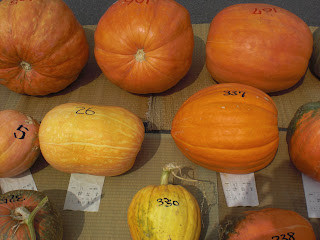“Hello, my name is Ben and I’m an asthmatic.”
(Group voice) “Hello Ben.”
“Well, I’ve been without a puff of my meds for going on two weeks now…”
(Collective nods and murmurs of acknowledgement)
-----
Yesterday was spent on a near all-day medical adventure that culminated with the filling of my very first Japanese drug prescription.
I arrived at the
I selected the long string of kanji that referred to the lungs and respiratory system on the internal medicine card. Check-in was as easy as handing the receptionist my info form and national health insurance card. I was then instructed to take a seat and wait.
During your first hospital visit, you are given a unique magnetized data card that stores your name and contact information. Thus, repeat visits simply require you to scan your card at one of many automated check-in machines. The machine accesses your file and spits out a slip, telling you when and where your appointment will be held.
I was instructed to go to the internal medicine wing and sit in the “waiting room.” The area wasn’t so much a traditional “room” as it was a series of chairs and benches lined up in the hallway. I must admit that it was a little odd to see so many people of all different shapes, sizes, and ages queued up in such a small space. The entire hospital seemed flooded with outpatients. My boss later told me that hospitals in
When it was my turn to be seen, my name was called and I was brought into exam room #14 and greeted by Dr. Chika Sato. She was very friendly and had read over the note provided by my American asthma doctor explaining my symptoms and current medications. She didn’t understand one of the English words that my doctor had written in his description. Turns out, neither did I. Humorously, we both laughed and took out our electronic dictionaries in order to gain a better understanding of the vocabulary word, me fishing around in English, her in Japanese.
She asked me some generalized questions about my asthma, listened to my breathing with a stethoscope and conducted a peak flow reading. It was just like a trip to the asthma doctor back home, albeit entirely in Japanese. Based on my experience, going to the doctor in
Dr. Sato said my saturation was a little low and told me to come back in a month for a follow-up visit. With that, she wrote me my prescriptions, smiled, and said I could go.
I made my way to the payment counter and subsequently experienced the biggest sticker shock of my life. I paid a whopping $9.52 for my entire checkup at the hospital. Since Japanese national health care pays for 70% of any medical care or prescriptions, this means that the grand total for the visit was only a little over 30 bucks. In
The hospital automatically faxes your prescriptions to a pharmacy of your choice for easy pickup. I had mine sent to the pharmacy conveniently located across the street. All that was left was to stroll over and pick up my medication.
My current asthma medicine is the Advair Diskus (500/50 strength) manufactured by Glaxo Smith Kline. It is a combination of the two drugs Serevent and Flovent that I used to take via separate inhalers as a child.
Prior to leaving for
The price was simply too high for me to pay. I walked out of the pharmacy without my medication and left for
Yesterday I purchased an Advair Diskus asthma inhaler in
I brought up the subject with my boss. She said that the $9.52 I paid for my hospital check-up was actually pretty high by Japanese standards. I genuinely burst out laughing. According to her, even cancer drugs typically run less than $100 per prescription. $100 for medicine is so astronomically high by Japanese standards that the hospital will often conference and give you advance warning if it is likely you will have to pay that much.
In summary, I am a foreigner living in
To all those who still oppose the idea of universal health care coverage for all Americans, all I can say is,
It’s time for
B.E.W.

















































